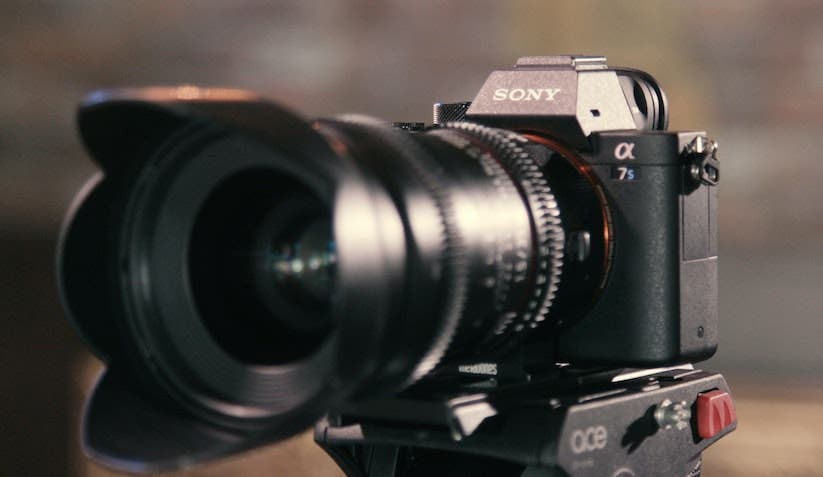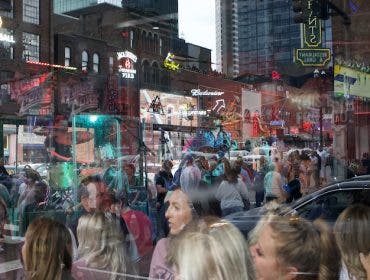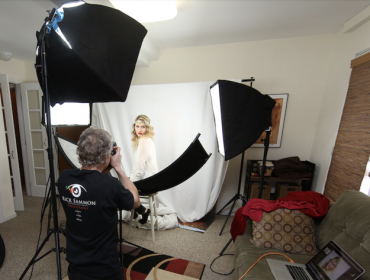When you choose a digital camera, you have many decisions to make. The first of them is whether you need a full frame or crop camera. Both camera types have a lot of advantages and produce high-quality images. However, if you don’t choose the right camera for you, all its advantages and disadvantages will turn against you and stop you from achieving your potential. Here is everything you need to know about full frame vs crop cameras and how to choose the right camera type for your purpose.
What is a Full-Frame Camera?
A full-frame camera has a 36 x 24 mm sensor, which is the size of a frame of a 35mm film camera. Unless you go into medium or large format cameras, which are mostly used in commercial photography, full-frame is the largest sensor size available to consumers and professionals. Full-frame cameras can be DSLRs (e.g., Canon EOS 5D Mark IV, Nikon D6), mirrorless (e.g., Sony Alpha a7s III, Nikon Z Series), and even compact (e.g., Leica Q2, Zeiss ZX1).

Lenses are designed for full frame vs crop sensors as well. If you have a full frame camera, you have to use full frame lenses. Otherwise, your photographs will have black edges and you will have to crop that area away. That’s because the image in the lens will be smaller than the frame in the sensor.
Pros and Cons of Full Frame Cameras
Large sensors are more expensive and harder to manufacture, making full frame cameras more expensive. As mentioned, they only work with full frame lenses, which are more expensive than cropped ones. So, choosing full frame gear increases your costs. Even the compact and mirrorless full frame options are heavier and bigger. A full frame camera is more difficult to handle.
However, they deliver incredible image quality, clarity, and sharpness at high ISO values, and artistic freedom even in low lighting conditions. Full frame cameras reduce ISO noise and capture the tiniest details of the scene. They also have a wider dynamic range. This allows you to photograph scenes with high luminosity contrast.
Thanks to their large sensor, full frame cameras have a larger pixel, which means they record more information. If you shoot in RAW, you’ll be able to recover overexposed or underexposed photographs by restoring the detailed information stored by your full-frame camera. However, recording more data means larger files and slower image processing. So, you’ll need a larger memory card as well.
Also, thanks to the larger sensor, full frame cameras have a wider field of view. As a result, you’ll be able to capture more of the scene in front of you. The size of the sensor also improves the bokeh effect and creates a beautifully blurred background. This type of camera produces a shallower depth of field by default, which allows you to decrease the aperture (use a larger f-number) and reduce the amount of light entering the lens. It gives you many creative options and helps you avoid overexposing a photograph while looking for a shallow depth of field.

What is a Crop Camera?
A crop camera or a cropped-frame camera is a camera with a sensor smaller than the equivalent of a 35mm frame of a film camera. Cropped sensors typically measure 22.5×15 mm or 24×16 mm, but they can have other dimensions as well.
The Advanced Photo System (APS) is an image sensor format introduced in 1996 to standardize the cropped sensor variants. It had three different formats: classic (C), high-definition (H), and panorama (P). Most modern cameras are APS-C digital cameras. The latest use of the APS-H format was in 2009 for the Canon EOS-1D Mark IV that had a 1.3 crop factor. APS is discontinued, but the APS-C name is still frequently used for a cropped sensor.
Almost every manufacturer designs cameras with slightly different sensor sizes. Canon has a 1.6x crop factor, which means its cropped sensors are 1.6 times smaller than the full-frame sensor (i.e., 22.5×15 mm). Sony, Fuji, Pentax, and Nikon have a 1.5x crop factor. As a result, each manufacturer produces lenses designed for specific sensor sizes.
Although you can’t use a cropped frame lens on a full frame body, you can use a full frame lens on a crop camera. The image in the lens will be larger than the frame in the sensor, and the sensor will record just the part of the scene that fits its frame. For example, a 100 mm full-frame lens on an APS-C Canon body with a 1.6x crop factor will produce the equivalent image of a 100×1.6 = 160mm lens. As a result, the field of view will be narrower and the subject larger.

Hint: If you start with a crop factor camera but invest in full frame lenses, you will have an easier transition into a full frame camera later, as you don’t have to replace all your lenses as well.
Pros and Cons of Crop Cameras
Because crop cameras are less expensive, they are more popular. You have plenty of DSLR, mirrorless, and compact models to choose from. The variety of lenses for crop cameras is also broader. The price and versatility of crop cameras make them the perfect choice for beginners.
The crop factor is, in fact, a magnification factor that can work in your favor. For example, wildlife photographs require as much magnification as you can get. So why not multiply the magnification factor of a telephoto lens with the crop factor?
The major drawback of a cropped sensor is the lower image quality, especially at high ISO and in low lighting conditions. But if you’re looking for a camera that is light and easy to maneuver, a crop camera may be what you need.

Is a Full Frame or Crop Camera Right for You?
Consider your workflow and preferred settings before deciding which camera to buy. Of course, you should aim for the best image quality possible as a general rule. However, although they provide better image quality, full frame cameras may be too heavy and bulky to carry around for capturing action shots and candid street snapshots. On the contrary, if you always use a tripod or take photographs in a studio, the camera’s weight is not essential anymore.
A full-frame camera provides a wider field of view, which is excellent for landscape photography. Their ability to perform in low lighting conditions and at high ISO values makes them perfect for astrophotography as well. Some portrait and commercial photographers prefer full frame cameras for their shallower depth of field and exquisite details.
On the other hand, the deeper depth of field given by a crop camera may be what you want for your photographs. For example, you may want to have the entire frame in focus and achieve the desired field of view with your wide lens regardless of the crop factor. In some situations, the magnification produced by the crop factor may be the boost you need for better close-ups and macro photographs.

Concluding words
As always, there isn’t one solution for everybody. We all have different expectations from a camera, limited budgets, and personal workflows. Some prefer to carry lighter gear. Others will do anything for the best image quality. For some, the ability to work in low light is the most important.
Go beyond the advertising campaigns and find out what each type of camera offers and how it can help your artistic purpose. A great photograph needs more than the latest camera. It requires a determined and skilled photographer.






